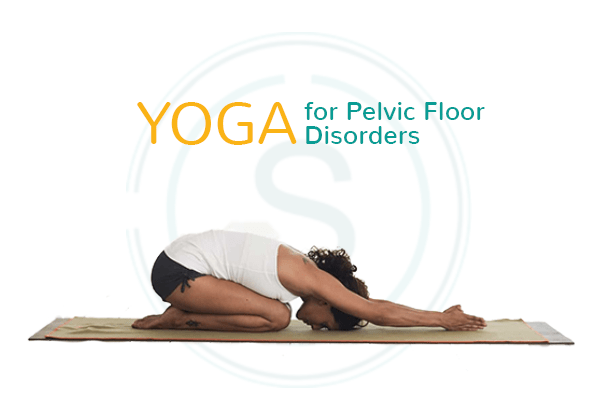Pelvic floor dysfunction or pelvic floor disorders are surprisingly very common in both men and women. It is defined as the inability to correctly tighten & relax the pelvic floor muscles to have a bowel movement. Some common symptoms of pelvic floor disorders include urgency and frequency of urination, urinary and faecal incontinence, pain with sexual intercourse.
Kegels exercises would be a great help to strengthen your pelvic floor muscles.
But Kegels are not the only thing you can do to strengthen pelvic floor muscles. Recent studies show that yoga is one of the best ways to improve pelvic floor health – say the experts of pelvic floor dysfunction.
5 Yoga Poses for Reducing the Risk of Pelvic Floor Disorders
Below are the 5 best yoga poses for pelvic floor disorders
1. Constructive Rest (Savasana Variation Bent Legs)
One of the best yoga poses for pelvic floor strengthening is constructive rest or Savasana – specifically the variation with bent legs. The point of this pose is all about bringing your body to a state of neutrality.
Start this pose by lying on your back, feet wide and knees together, with both hands resting on your belly. Close your eyes, tune into your breath and feel your stomach rise and fall. Feeling your breath is an easy way for a pressure check on your pelvic floor.
2. Knees to chest pose (Apanasana)
A classic yoga posture, knees-to-chest is great for relieving lower back pain and also helps in pelvic floor dysfunction. This pose is also recommended for those who are suffering from digestive disorders and irritable bowel syndrome.
Begin this pose by lying on your back, with your legs and arms extended. As you exhale, draw your knees to the chest. Keep your back flat and when you inhale, place your feet on the floor and stretch your arms overhead.
3. Wide-Legged Squat (Malasana)
The wide-legged squat or Malasana is a more challenging posture to stretch and strengthen the groin and the muscles of the inner thigh. This is also the best lower-body strength exercise that emphasizes the glutes, quads, hamstrings, and hip flexors that results in a healthy pelvic floor.
Do squats by bending with hips back to bend forward by keeping your back straight and knees pointing in the same direction( as feet). Go down until your thighs are just about past parallel to the floor. Also, extend your knees and hips until legs are straight.
4. Warrior II (Virabhadrasana II)
Warrior II, also known as Virabhadrasana II is a standing yoga pose that enhances the strength and stability of pelvic floor muscles. Practising Warrior II can help to aid digestion by stimulating the abdominal organs and can relieve pelvic pain.
Start with Mountain pose, step your right foot back about three or four feet. Turn your left foot and your right foot slightly in and out so that your toes are pointing away from your body. Bend the left knee over the left ankle, bringing your left thigh parallel to the floor.
5. Chair pose (Utkatasana)
Utkatasana, chair pose is a standing yoga posture which is really good for strengthening pelvic floor muscles. This is because the floor is stretched when going down, and lifted when coming up. It is a low squatting yoga asana in modern yoga.
Begin in Tadasana (Mountain Pose), with arms out in front of you, parallel to the floor. Bend your knees and push your hips back in a squat, as if you were going to sit in a chair. Ensure that you don’t bring your hips down lower than your knees.
Looking for a free second opinion from an expert who has a specialization in pelvic floor dysfunction? SMILES is one of the best hospitals in Bangalore for pelvic floor treatment.

